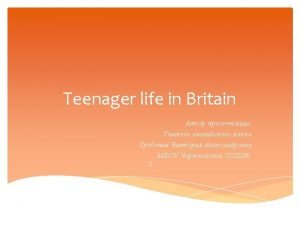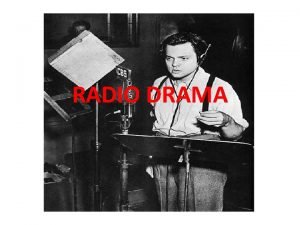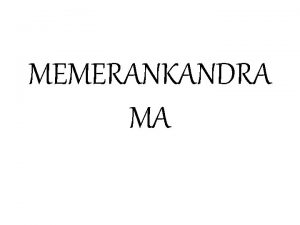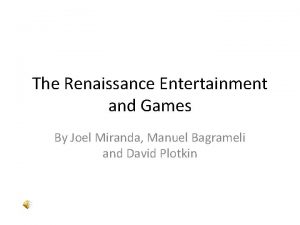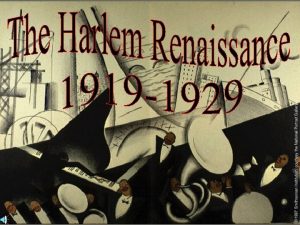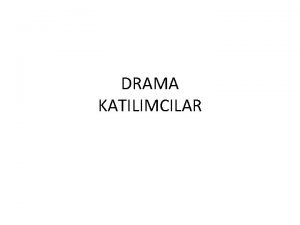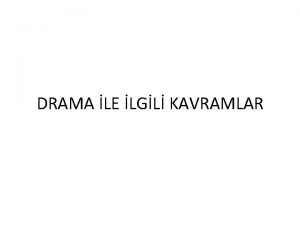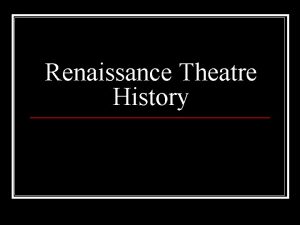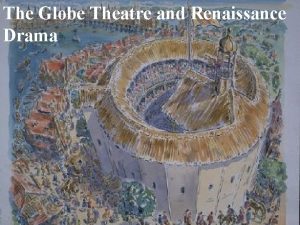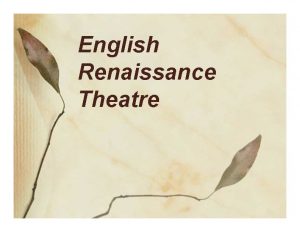Renaissance Theatre A new drama During Renaissance theatre








- Slides: 8

Renaissance Theatre

A new drama • During Renaissance, theatre changed from what it was in the Middle Ages: it explored human nature through the adventures of heroes and heroines, but also the history of England themes like power. • The 2 most important playwrights (drammaturghi, commediografi) of this period were Christopher Marlowe and William Shakespeare.

Christopher Marlowe • Marlowe wrote Doctor Faustus. In this play, the protagonist, Dr. Faustus, makes a pact with the devil: he promises him his soul in return for unlimited power and knowledge. • This play can be seen as an allegory of HUMANISM. In fact, Faustus challenges God and makes a pact with the devil; similarly, man breaks with the Catholic Church and is free of religious control and obtains more knowledge. • The play ends with Faustus’s penitence, but its main theme is free will: the possibility for a man to choose his own fate.

Shakespeare as a playwright • Shakespeare was unprecedented for the ORIGINALITY, quantity and variety of themes, which are still applicable to today’s world. Some critics say all the literature is influenced by him. • His literature is ALL-INCLUSIVE: it explores all aspects of human life and represents all levels of society. He reflects on the great problems of existence independently from the pre-existing models.

Elizabethan Theatre • Before the birth of theatre, there were troupes of professional actors who travelled around and gave public performances on movable platforms, oftern in yards or public squares (see mystery plays etc. ). • Then, this changed and COURT INTERLUDES developed: they were plays performed at court for small élites. • Finally, theatres were born. The first permanent theatre was built in 1576 in Shoreditch (London) and was simply called ‘The Theatre’. • Theatres were CIRCULAR or OCTAGONAL/polygonal. Around them, there were 3 rows of galleries; these seats were expensive and for rich people. The lower classes stood inthe centre and paid less. The actors performed on a stage, which projected out towards the standing audience.


The Globe Theatre • The most famous theatre at that time was The Globe Theatre, built in 1599 on the South bank of the river Thames. • It was an open air theatre without lights, so performances had to take place during the day. • There was no stage curtain and very few props (objects used on the scene) audience had to imagine the scene • The actors moved from scene to scene without a break • When theatre was full, the audience stood around the stage on 3 sides close relationship In 1613, the Globe burnt down (probably because of a cannon shoot which burnt the straw roof). It was built again before Shakespeare’s death (1616). It kept working until the Puritans closed it in 1642 and in 1644 it was burnt down again to built some new houses. Today, it is possible to see its reconstruction, near to where it really was. Its reconstruction is very accurate, with the same techniques and materials.

The Production of plays • The acting companies didn’t use much scenery, but gave importance to costume: sometimes not realistic, but always very accurate. • Women were not allowed to act until 1660, so female roles where played by boys. • In scenes in which the female protagonists DISGUISED as men, boys were disguised as girls who were disguised as men. Thanks to these scenes, the women protagonists could have access to some roles and speak in a way that were normally considered impossible for a woman. • Acting in Renaissance was formal in speech and gesture and was connected to RHETORIC: in fact Elizabethan students studied rhetoric as a form of poetic composition and argumentative writing and included the study of gestures.
